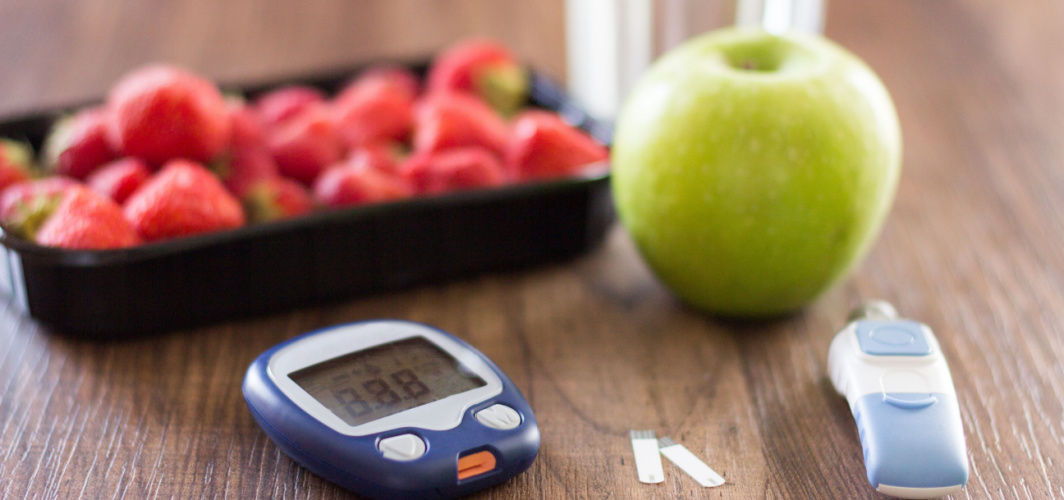Diabetes Management
Maintaining a Healthy Weight in Diabetes: All You Need to Know
3 min read
Published on - 20 September 2023
Share this article
0
0 like

Maintaining a healthy weight when you have diabetes has a lot of benefits. It safeguards your blood pressure and cholesterol levels. It also lowers your diabetes-related complications. Studies confirm a strong link between weight and type 2 diabetes.
- They also confirm that weight loss can delay the onset or decrease the risk of type 2 in prediabetic individuals.
- For individuals with diabetes, maintaining a healthy weight has shown an improvement in glycemic control.
What is Considered an Ideal Weight?
Assessing whether your weight falls within a healthy range is vital for overall well-being. Two primary methods for this evaluation are Body Mass Index (BMI) and Waist Circumference.
Body Mass Index (BMI)
BMI is a person’s weight in kilograms divided by the square of height in meters. For example, if you are 1.7 m tall and weigh 77 kg, your BMI is 26.6, categorizing you as overweight. Here's a breakdown of weight status based on BMI:
|
Weight Status |
BMI |
|
Underweight |
Less than 18.5 |
|
Normal |
18.5–24.9 |
|
Overweight |
25–29.9 |
|
Obesity |
30 or greater |
However, it's important to note that BMI doesn't account for belly fat, which is significant as excess abdominal fat can elevate the risk of type 2 diabetes.
Waist Circumference
Waist circumference takes into consideration belly fat, offering a more comprehensive assessment of potential health risks associated with excess weight. Women with a waist measurement exceeding 35 inches and men with a waist measurement exceeding 40 inches are at higher risk for weight-related health issues.
How to Maintain a Healthy Weight in Diabetes?
Individuals with diabetes can maintain a healthy weight by having a balanced diet, ensuring physical activity, and keeping a watch on their blood sugar levels.
Balanced Diet
- A balanced diet is the cornerstone of weight management for individuals with diabetes. Focus on portion control and choose nutrient-dense foods.
- Emphasize whole grains, lean proteins, healthy fats, and plenty of fruits and vegetables.
- Monitor your carbohydrate intake and distribute it evenly throughout the day to prevent blood sugar spikes. Avoid or limit sugary and processed foods.
Regular Physical Activity
- Physical activity is not only essential for weight management but also for improving insulin sensitivity.
- Aim for at least 150 minutes of moderate-intensity aerobic exercise or 75 minutes of vigorous-intensity exercise per week, as recommended by health guidelines.
- Incorporate strength training into your routine at least two days a week, and activities you enjoy, like brisk walking, swimming, cycling, or dancing, to make exercise a sustainable part of your routine.
Monitoring Blood Sugar
- Regularly monitor your blood sugar levels as directed by your healthcare provider.
- Keeping your blood sugar in target range can help prevent excessive hunger and overeating.
Conclusion
Maintaining a healthy weight is a critical aspect of diabetes management. By adopting a balanced diet, staying physically active, monitoring blood sugar levels, managing stress, seeking professional guidance, setting achievable goals, and leveraging community support, you can successfully achieve and sustain a healthy weight while effectively managing your diabetes. Remember that it's a journey, and making consistent, positive choices over time can lead to significant improvements in your health and well-being. Always consult with your healthcare team for personalized advice and recommendations.
Diabetes Management
Consult Top Diabetologists
View AllLeave Comment
Recommended for you

Diabetes Management
Should Diabetics Fast in Navratri?
Fasting during Navratri can be a personal choice for individuals with diabetes, but it requires careful planning and consideration. Consulting with a healthcare provider is essential for creating a fasting plan tailored to your needs. Choosing low-carbohydrate, low-GI foods, staying hydrated, monitoring blood sugar levels, and being prepared for potential hypoglycemia are crucial aspects of successful fasting. If blood sugar levels become unmanageable or drop too low, breaking the fast is recommended. Listening to your body and prioritising health and safety are the keys to religious practices.

Diabetes Management
Eggplants and Diabetes: A Healthy Addition to Your Diet
Eggplants can be a healthy addition to the diet of individuals with diabetes. Low in calories and carbohydrates, they offer various benefits, including blood sugar regulation due to their fiber content and antioxidant properties. Eggplants also support heart health and weight management. To incorporate them into your diabetes-friendly diet, try grilled or roasted eggplant in salads, hearty stews, or stuffed eggplant dishes. However, it's essential to practice portion control and consult with a healthcare provider or dietitian to personalize your dietary plan.

Diabetes Management
Diabetic Neuropathy: Why the Burning Sensation in Your Feet Should Not be Ignored?
Diabetic neuropathy refers to nerve damage caused by diabetes, often leading to a burning sensation in the feet. Ignoring this symptom can be dangerous as it indicates nerve damage progression. Diabetic neuropathy can cause loss of sensation, ulcers, infections, and foot complications. Seeking medical attention is crucial to prevent further complications.
Subscribe
Sign up for our free Health Library Daily Newsletter
Get doctor-approved health tips, news, and more.
Visual Stories

8 Fruits That are Incredibly Healthy for Diabetes
Tap to continue exploring
Recommended for you

Diabetes Management
Should Diabetics Fast in Navratri?
Fasting during Navratri can be a personal choice for individuals with diabetes, but it requires careful planning and consideration. Consulting with a healthcare provider is essential for creating a fasting plan tailored to your needs. Choosing low-carbohydrate, low-GI foods, staying hydrated, monitoring blood sugar levels, and being prepared for potential hypoglycemia are crucial aspects of successful fasting. If blood sugar levels become unmanageable or drop too low, breaking the fast is recommended. Listening to your body and prioritising health and safety are the keys to religious practices.

Diabetes Management
Eggplants and Diabetes: A Healthy Addition to Your Diet
Eggplants can be a healthy addition to the diet of individuals with diabetes. Low in calories and carbohydrates, they offer various benefits, including blood sugar regulation due to their fiber content and antioxidant properties. Eggplants also support heart health and weight management. To incorporate them into your diabetes-friendly diet, try grilled or roasted eggplant in salads, hearty stews, or stuffed eggplant dishes. However, it's essential to practice portion control and consult with a healthcare provider or dietitian to personalize your dietary plan.

Diabetes Management
Diabetic Neuropathy: Why the Burning Sensation in Your Feet Should Not be Ignored?
Diabetic neuropathy refers to nerve damage caused by diabetes, often leading to a burning sensation in the feet. Ignoring this symptom can be dangerous as it indicates nerve damage progression. Diabetic neuropathy can cause loss of sensation, ulcers, infections, and foot complications. Seeking medical attention is crucial to prevent further complications.